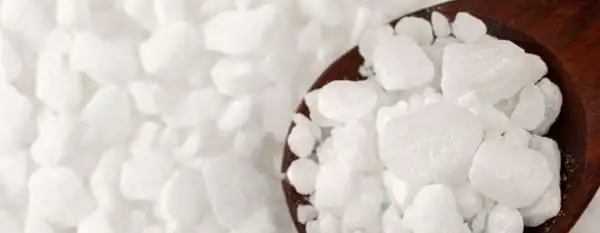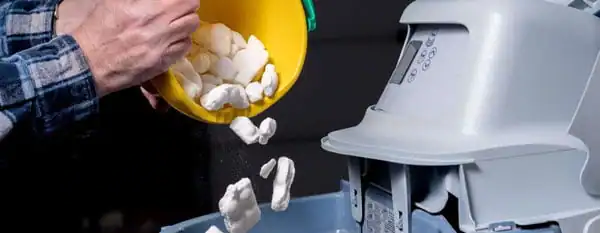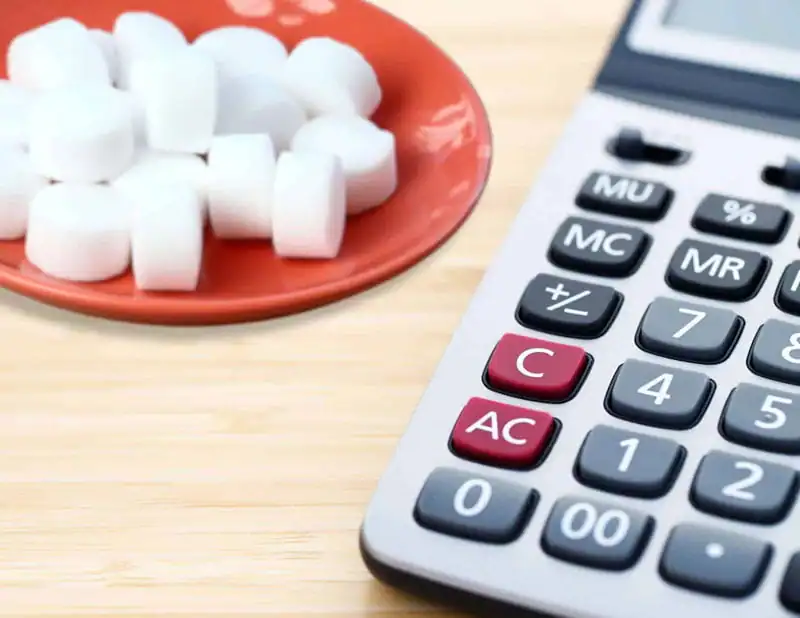Water softeners are essential appliances for people living in hard water areas. They work by removing minerals, such as calcium and magnesium, from the water, which can cause limescale buildup and other issues. However, to function properly, water softeners require salt, which needs to be added to the system periodically. But just how do you calculate the salt that your water softener needs?
By determining the right amount of salt to add, you can ensure that your water softener is functioning properly and providing you with the best quality water possible. Read on to learn about the data you’ll need to calculate the salt usage for your system.
Understanding Water Softeners
A water softener is a device that removes minerals, such as calcium and magnesium, from hard water. Hard water is water that contains high levels of dissolved minerals, and it can cause problems such as scale buildup, decreased efficiency of appliances, and dry skin and hair. Water softeners are commonly used in households and businesses to improve the quality of their water.
What is a Water Softener
A water softener is a device that uses a process called ion exchange to remove minerals from hard water. It consists of a resin tank, a valve, and a control system.
The resin tank contains resin beads that attract and hold onto the minerals in the water. The valve controls the flow of water through the tank and initiates the regeneration process when necessary.
The control system, which can be manual or computerized, manages the operation of the valve and monitors the efficiency of the system.
Types of Water Softeners
There are two main types of water softeners: salt-based and salt-free.
Salt-based water softeners use resin beads and salt to remove minerals from the water. These types of water softeners are more effective at removing minerals, but they require regular maintenance and the addition of salt. While salt-based water softeners typically use Sodium chloride as the salt supply, there are water softeners that can also use Potassium chloride.
Some salt-free water softeners use a process called template-assisted crystallization to convert minerals into crystals that are too small to adhere to surfaces. Salt-free water softeners are low-maintenance, but they are less effective at removing minerals.
Another type of salt-free system is a magnetic system. These systems purport to change the molecular structure of the water so that minerals like calcium are suspended in the water so that they are less likely to attach to pipes and fixtures. These systems have been widely used in Asia and Europe for longer than they have been available in the US. One things that reviewers point out as a benefit is that these systems can be good for water that will be used for irrigation because the minerals in the water are good for plant health, and that the magnetized water passes through drip emitters without eventually clogging them.
How Water Softeners Work
Water softeners work by exchanging ions in the water. The resin beads in the tank have a negative charge, which attracts positively charged minerals, such as calcium and magnesium. As the water passes through the resin tank, the minerals are attracted to the resin beads and are removed from the water.
When the resin beads become saturated with minerals, the valve initiates the regeneration process. During regeneration, a brine solution is used to flush the minerals from the resin beads and recharge them with sodium ions.
The minerals and brine solution are then flushed out of the system, and the resin beads are ready to remove more minerals from the water.
Water softeners vary in efficiency and resin volume, which affects how often they need to be regenerated. Some water softeners use a computer-controlled valve to monitor the efficiency of the system and initiate regeneration only when necessary. This improves the efficiency of the system and reduces the amount of salt and water used during regeneration. A more efficient system will give you a lower value when you calculate the salt needed.
Hard Water Minerals
Calcium and magnesium are the two most common hard water minerals that can lead to a range of issues in households and industrial applications. Water hardness levels can vary depending on the mineral content of the water, and this is determined by factors such as the geology of the region and the water source. Another common mineral that drives people to use a water softening system is Iron. If you have enough iron in your water, it can even change the color of your hair from daily showering. I have fairly light colored hair, and when I lived in Minnesota, I had a reddish streak that ran down the hair on the back of my head from the heavy iron content in our water!

How Much Salt Will I Use?
There are a number of factors that affect how much salt you typically use in a water softener.
- Hardness incoming water – usually measured in Grains per Gallon (GPG)
- How much water do you use in a day? When calculating averages, water softener system installers usually use a rate of 75 gallons per person per day.
- What is the capacity of your water softener? This value will also be measured in Grains per Gallon (GPG) and will often be a number between 15,000 and 85,000 – you should be able to find it in your owner’s manual or spec. sheet.
In general, a rule of thumb is that a family of four with water that is ‘average’ for homes that use a softening system (a water hardness level of around 7–10 grains per gallon) will go through about 40 pounds of salt in a month. Here is a graphic visualization of typical salt usage in a household that factors in usage and water hardness:

Some modern water softeners come equipped with smartphone apps or alert messages on the control unit that notify you when the salt levels are low, ensuring timely replenishment. After using the system for a few months, you may learn how much your system typically uses without having to calculate the salt using a formula. Sometimes it is nice to know what the system should use though to compare it to what it does use. It lets you know things are setup as they should be.
Water Softener: Calculating The Salt Needed
If you really, really want to do a more exact calculation than “about 40 pounds a month”, go collect the values from my list above, and then you can plug them into a calculator like this one: Water Softener Salt Usage Calculator.
Here is a little more detail about determining each of the values needed to calculate the salt usage for your system.
Determining Water Hardness
The first step is to determine the hardness of your water. This is typically measured in Grains per Gallon (GPG). You can find this information by contacting your local water utility or purchasing a water hardness test kit.
The national average for water hardness is around 10-12 GPG, but some areas may have very hard water with levels as high as 20 GPG or more.
Calculating System Capacity
Next, you’ll need to determine the processing capacity of your water softener. This is also measured in Grains per Gallon (GPG) and should be available from the owner’s manual, the system specification sheet, or by contacting the manufacturer directly.
Calculating Water Usage
The average water usage per day per individual in your household is thought to be about 75 gallons. Perhaps you have low flush toilets and efficient shower heads and you don’t run the water in the sink unless actually using it. Then you may be below the national average. Good for you!
Sometimes your water utility statement will give you an idea of what your own household actually uses. Look at the winter month usage, because water softener systems are usually set up not to soften water that is used outdoors for irrigation. I am a fair eco-conscious person, so my utility bill indicates that my usage (leaving out irrigation) is more like 50 gallons a day. Looking at your utility bill may give you a better number to use than using the average value.
Calculate the Salt Usage
With the above information you can calculate the salt use. Remember that this is just a formula set up to reflect averages. Incoming water hardness can vary over time. People can use more or less water. Take the value you calculate with ‘a grain of salt’. Cliché intended.

Types of Water Softener Salt
When it comes to selecting the right salt for your water softener, there are several types to choose from. Each type has its own unique characteristics that make it suitable for different situations. Please see our article on water softener salt selection if you are looking to select the right salt for your system: A Guide To Water Softener Salt: Pellets, Blocks, Cubes, or Crystals.
Note that the type of water softener salt that you choose should not really have an effect when you calculate the salt that is needed. If you are using a similar purity level (99.5% purity and above), the salt usage should be the same.
Maintaining Your Water Softener
Proper maintenance of your water softener is essential to ensure its longevity and effectiveness. We’ve written an article on the steps needed to take great care of your water softener system at: Essentials of Water Softener Maintenance.







